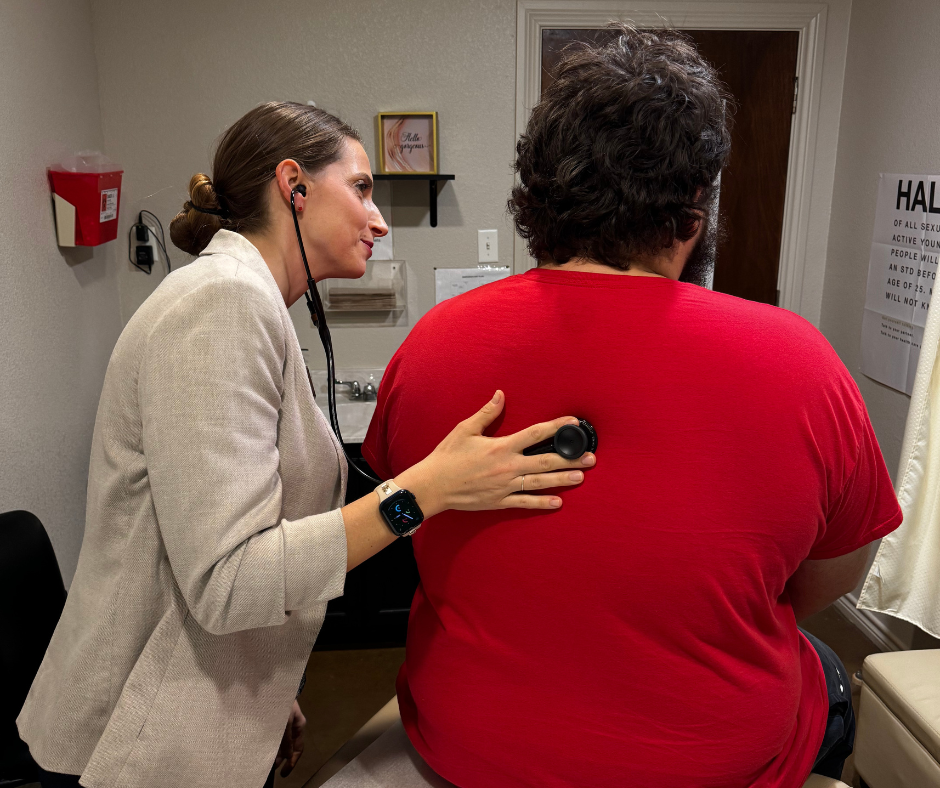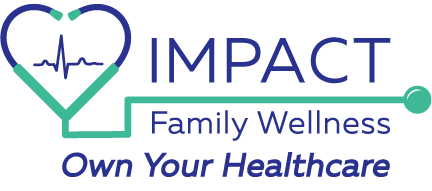7 Ways You Can Save on Medical Bills
Key Takeaways
- You don’t need insurance to access affordable care
- Telehealth services offer convenient, low-cost virtual visits for common issues
- Sliding scale and community clinics base their fees on your income
- Direct Primary Care (DPC) is a monthly membership model that gives you consistent access to a doctor for routine needs
- Cash-pay discounts are available at many doctors’ offices and labs
- Prescription discount programs like GoodRx and SingleCare can help reduce medication costs by 50-80%
- Nonprofit hospitals and local programs often provide financial assistance or charity care
- Alternative insurance options like catastrophic plans or short-term coverage can provide backup in case of major emergencies
7 Ways You Can Save on Medical Bills
Healthcare costs in the United States are rising faster than incomes, and not just for major procedures or hospital stays.
According to former Congressional Budget Office Director Peter Orszag, it’s the cost per patient, not just the number of patients, that is driving America's long-term fiscal crisis. Even within the same city, prices for identical medical services can vary dramatically. This unpredictability leaves many patients struggling to plan for or afford basic care.
For people who are uninsured or underinsured, this often translates into skipped doctor visits, delayed treatment, and a fear of even routine care. A simple check-up or lab test can mean hundreds of dollars out-of-pocket, with no clear explanation of what’s included or what alternatives exist.
Meanwhile, healthcare providers and hospitals are not incentivized to control prices or offer transparency, and patients are left to carry the burden without tools to navigate the system.
While the system is far from perfect, there are practical ways to reduce your healthcare costs, some of which are overlooked entirely by traditional insurance plans. In the guide below, you’ll find seven smart strategies that can help you access affordable, reliable care without draining your savings.
1. Use Telehealth Services
Telehealth, or virtual doctor visits, has become one of the easiest and most affordable ways to get care for common health issues. Whether you're dealing with a sore throat, a rash, a medication refill, or a follow-up question, many telehealth platforms connect you with licensed providers for a flat, transparent fee, and no waiting room.
Some services charge as little as $15 to $40 per visit, and a few even offer free consultations through state programs, non-profits, or employer-sponsored health initiatives.
Check HRSA.gov for local community health centers, many of which now provide free or low-cost virtual care.
Tip: When signing up, make sure to check whether prices are for insured or self-pay patients. Many platforms clearly list both.
2. Look Into Sliding Scale and Community Clinics
Community health clinics and “sliding scale” clinics offer medical services based on your income and ability to pay. That means you might pay $0 for a visit, or just a small fee, even without insurance. These clinics are designed specifically to serve people who are uninsured, underinsured, or struggling financially.
Services can include:
- Primary care and check-ups
- Lab tests
- Vaccines and preventive care
- Women’s health and prenatal services
- Mental health and substance use counseling
To find one near you, visit the HRSA Health Center Finder. This federal tool lists local clinics that receive government funding to keep care affordable. Many of these clinics also now offer telehealth appointments if you’re unable to visit in person.
Tip: You’ll usually need to bring proof of income (like a pay stub or tax return), but staff can often help you gather what you need.
3. Consider Direct Primary Care (DPC)
Direct Primary Care (DPC) is a different kind of healthcare model where you pay a flat monthly fee, often between $50-$100, for unlimited access to your primary care doctor. There are no surprise bills, no copays, and no dealing with insurance companies.
Many DPC clinics offer:
- Same-day or next-day appointments
- Extended visits with your doctor
- Messaging or virtual consults at no extra cost
- Basic lab work is included or offered at deeply discounted rates
- Care for chronic conditions, preventive needs, and acute illnesses
For someone without insurance, DPC can feel like having a doctor “on call” without the emergency room price tag. While it doesn’t replace insurance for hospital stays or major surgeries, it can significantly reduce the need for urgent care or specialist visits.
You can search for DPC providers in your area using DPC Frontier’s mapper, such as Impact Family Wellness in Texas, which offers straightforward, transparent pricing explicitly designed for individuals and families without insurance.
Tip: DPC works well alongside things like catastrophic insurance or short-term plans, giving you peace of mind for both routine and unexpected needs.
4. Ask About Cash-Pay Discounts
Many doctors’ offices, labs, imaging centers, and even hospitals offer lower rates for self-pay patients, but you have to ask. When you’re not going through insurance, providers often skip the administrative costs and offer a discount just for paying at the time of service.
Here’s what that might look like:
- A doctor’s visit that’s billed at $180 through insurance might cost only $80 or less for self-pay
- Bloodwork panels can often be done for $10-$50 at independent labs
- X-rays or ultrasounds can sometimes be arranged for a fraction of hospital pricing at stand-alone imaging centers
You can also compare prices in advance using tools like:
- Healthcare Bluebook - Estimates fair prices for common procedures
- ClearHealthCosts - Crowd-sourced price data for medical services
- Quest Diagnostics - Offers direct-to-consumer lab test options at posted prices
Tip: Always ask for an estimate before your visit and get it in writing when possible. This helps avoid unexpected charges later.
5. Use Prescription Discount Programs
Prescription costs can add up quickly, but you don’t have to pay retail prices at the pharmacy. Several programs offer free or low-cost discount cards that can dramatically reduce the price of both brand-name and generic medications.
Here are some trusted tools to try:
- GoodRx - Compare prices at nearby pharmacies and get printable or digital coupons
- SingleCare - Offers discounts on prescriptions, dental, and vision services
- NeedyMeds - Connects patients to medication assistance programs from drug manufacturers
- Cost Plus Drugs - Transparent pricing on hundreds of common medications, sold at cost plus a small markup
You can often save 50-80% or more, especially on generic drugs. In some cases, using these discounts is cheaper than using insurance.
Tip: When you get a prescription, ask your doctor if a generic version is available—it’s usually just as effective, but far more affordable.
6. Leverage Nonprofit Help and Local Aid Programs
Many hospitals, nonprofit organizations, and even local governments offer financial assistance programs for people who can’t afford medical care. These programs aren’t always advertised, but they can cover large portions of hospital bills, specialist visits, medications, and even transportation to appointments.
Start with your local hospital. Under federal law (known as IRS 501(r) regulations), nonprofit hospitals are required to offer financial assistance or “charity care” to patients who qualify. Even if you've already received care and have a bill, you may be able to apply for retroactive assistance to reduce or eliminate your balance.
Other places to check:
- Local United Way - Connects you with community clinics, support services, and emergency aid
- State and county health departments - Many offer help with things like free immunizations, cancer screenings, and chronic disease management
Tip: Ask to speak to a hospital’s financial counselor or billing department before or after a visit. Don’t assume you’re ineligible; many programs cover people with low income, even if they’re not on Medicaid.
7. Revisit Your Insurance Options—But Think Outside the Box
According to a national survey cited in Psychiatric News, over one-third of insured adults still face medical debt, and many delay or skip necessary care due to high deductibles, denied claims, or surprise charges. In some cases, insurance didn’t pay for services people assumed were covered, or they had reached their plan’s limit without realizing it.
If you’re uninsured, or if your plan feels too expensive to use, it may be time to explore non-traditional or supplemental options:
- Catastrophic or high-deductible plans - These typically have lower monthly premiums and are designed to cover worst-case scenarios like hospital stays or surgeries
- Short-term health plans - Limited but more affordable coverage for people between jobs or outside open enrollment
- Health care sharing ministries - Not insurance, but faith-based community cost-sharing models that help with larger expenses.
- Local Medicaid alternatives or indigent care programs - Some counties or states offer coverage-like assistance for low-income residents.
These options aren’t perfect, and they’re not a replacement for comprehensive insurance, but when paired with low-cost care models like Direct Primary Care or community clinics, they can help fill in the gaps without breaking your budget.
Tip: Use resources like HealthCare.gov to explore income-based plans, and ask clinics if they work with local financial assistance programs that help reduce your cost of care.
Final Thoughts: Affordable Care Is Within Reach
The high cost of healthcare can make it feel like you’re out of options, but the truth is, you’re not powerless. Whether you’re uninsured, underinsured, or simply trying to avoid another unexpected bill, there are ways to get the care you need without going broke.
From sliding scale clinics to telehealth platforms, prescription discounts to community-based aid, these strategies exist to make healthcare more accessible and more predictable. And while traditional insurance can offer some protection, it’s not the only path to staying healthy. Pairing low-cost services like Direct Primary Care with other smart options can help you take control of your health without constant financial anxiety.
The more you know about your options, the more confident you can feel taking that next step toward better, more affordable health.










